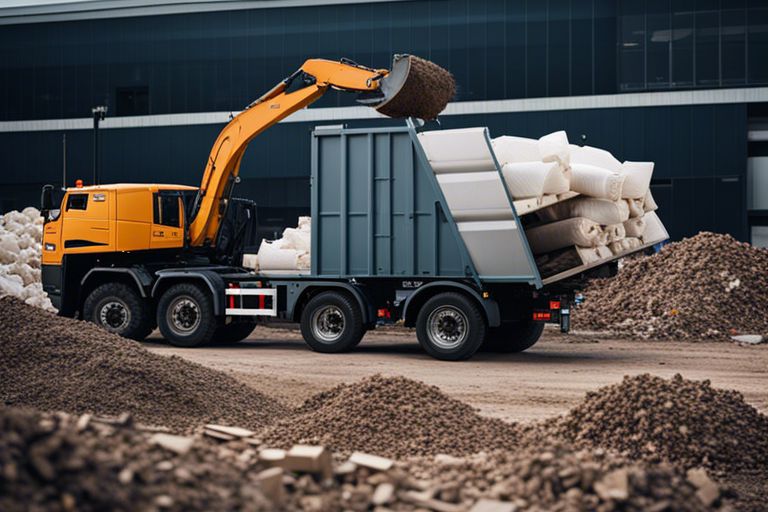Are you aware of the potential hazards a deteriorating building can pose to you and your community? In some cases, demolition becomes a necessary step to ensure the safety and well-being of everyone involved. In this blog post, we will explore the five key reasons why a building may need to be demolished, shedding light on the importance of understanding the signs that indicate when it’s time to say goodbye to a structure. To learn more about this topic, you can also check out our article on Five Reasons Why a Building May Need to Be Demolished.
The Lifecycle of Structures
Understanding the lifecycle of structures is crucial in recognising when demolition becomes necessary. The lifespan of a building is influenced by various factors such as design, construction quality, and maintenance. If you want to learn more about the common reasons why demolition is necessary, you can check out this informative article 4 Common Reasons Why Demolition is Necessary.
Structural Deterioration and Safety Risks
Structural deterioration is a serious issue that can compromise the integrity and safety of a building. Over time, exposure to the elements, poor construction materials, and lack of maintenance can lead to significant weakening of the structure. This poses a grave safety risk to occupants and passers-by, making demolition the only viable option.
Economic and Functional Obsolescence
As buildings age, they may become economically and functionally obsolete due to changing needs and technological advancements. Outdated designs and systems can lead to inefficiencies, high maintenance costs, and ineffective use of space. At this point, investing in renovations or adaptive reuse may no longer be economically feasible, and demolition becomes a more prudent choice.
Urban Development and Land Use
Urban development and land use play a crucial role in the decision to demolish buildings. As cities grow and change, the need for new infrastructure, residential spaces, and commercial developments often results in the demolition of older buildings to make way for progress. While the decision to demolish structures is not taken lightly, it is sometimes necessary for the overall growth and development of a city.
Making Way for Progress
When old, dilapidated buildings stand in the way of new construction projects that could significantly enhance the urban landscape, the decision to demolish becomes a necessary step towards progress. By removing outdated and unsafe structures, you are paving the way for newer, safer, and more efficient buildings. This process not only improves the aesthetics of the urban environment but also allows for the implementation of modern infrastructure that meets the current needs of the community. While the demolition of historic buildings may seem regrettable, it is essential for the advancement and prosperity of the city.
Zoning Changes and Revitalization Efforts
Zoning changes are often implemented to revitalise urban areas that have fallen into disrepair. By targeting specific zones for redevelopment, you can breathe new life into neglected neighbourhoods, making them more attractive and functional for residents and businesses. While this may involve the demolition of certain structures, it ultimately leads to a revitalised and thriving community. Through thoughtful zoning changes and revitalisation efforts, you can transform blighted areas into vibrant, sustainable spaces that benefit the entire city.
Environmental Considerations
When it comes to demolition, the impact on the environment is a crucial factor to consider. The demolition process can have both positive and negative effects on the environment, so it’s important to carefully weigh these considerations before proceeding with any demolition project.
Removal of Hazardous Materials
During a demolition project, the removal of hazardous materials such as asbestos, lead, and other toxic substances is a critical consideration. These materials can pose serious health risks to you, the demolition workers, and the surrounding community if not properly handled and disposed of. This is why it’s essential to work with experienced demolition contractors who are trained in the safe handling and removal of hazardous materials. It’s your responsibility to ensure that all hazardous materials are identified and removed before any demolition work begins.
The Role of Demolition in Sustainable Development
While demolition can sometimes seem like a destructive process, it can actually play a crucial role in sustainable development. By clearing old, inefficient, or unsafe structures, demolition paves the way for the construction of newer, more energy-efficient buildings. This process can also help to reduce urban sprawl, as older structures are repurposed or replaced with more sustainable developments. It’s important to consider the long-term environmental benefits of demolition, especially when you’re looking to create more environmentally friendly and efficient communities.
Legal and Regulatory Factors
When it comes to the decision to carry out a demolition, legal and regulatory factors play a crucial role. Compliance with building codes and legislation is of utmost importance in ensuring that the demolition process is conducted safely and within the parameters of the law. Additionally, the necessity of controlled demolition may also be a requirement based on the specific regulations in your jurisdiction.
Compliance with Building Codes and Legislation
Compliance with building codes and legislation is a non-negotiable aspect of any demolition project. Failure to adhere to these regulations could result in serious consequences, including fines and legal repercussions. These codes and legislation have been put in place to ensure the safety and structural integrity of the buildings being demolished, as well as the surrounding environment. Therefore, it is imperative that you thoroughly understand and comply with these rules before proceeding with any demolition.
The Necessity of Controlled Demolition
When it comes to demolition, the necessity of controlled demolition cannot be overstated. This method ensures that the structure is brought down in a carefully planned and executed manner, minimising the risk of damage to surrounding buildings and the environment. It also protects the safety of workers and the public by mitigating the potential for unplanned collapses or structural failures. By adhering to these regulations and implementing controlled demolition techniques, you can help to mitigate the risks associated with demolition and ensure a safe and successful outcome.
FAQ
Q: What are the reasons behind ruin?
A: The reasons behind ruin can include structural instability, environmental hazards, or the need for urban redevelopment.
Q: Why is demolition sometimes necessary?
A: Demolition is sometimes necessary to ensure public safety, remove hazardous materials, and make way for new construction or infrastructure projects.
Q: Is demolition the only option for a building in disrepair?
A: No, demolition is not always the only option. In some cases, renovation and restoration can be more appropriate and cost-effective solutions.
Q: How are decisions made about whether to demolish a structure?
A: Decisions about whether to demolish a structure are typically based on structural assessments, cost evaluations, and consideration of the building’s historical or cultural significance.
Q: What are the environmental implications of demolition?
A: Demolition can have environmental implications such as air and noise pollution, as well as the disposal of hazardous materials. However, with proper planning, these impacts can be minimised.
Q: What regulations govern the demolition process?
A: The demolition process is governed by local building codes, environmental regulations, and health and safety standards to ensure that it is carried out safely and responsibly.
Q: What are the alternatives to demolition?
A: Alternatives to demolition can include adaptive reuse, where a building is repurposed for a different use, or deconstruction, where materials are carefully dismantled and salvaged for reuse.







